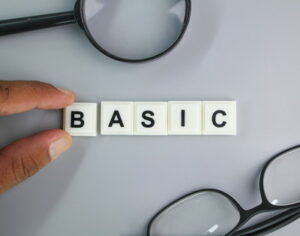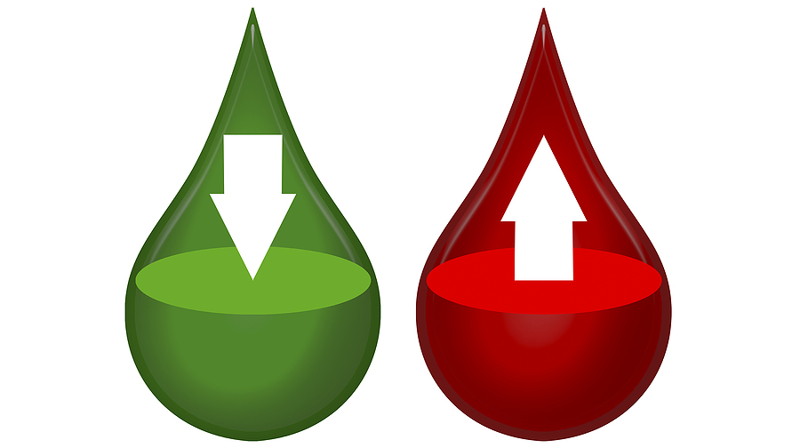![]() One of the reasons why blackjack was a game so though to decipher for game theorists is that the probabilities (of winning or losing) with the various hand totals do not increase or decrease monotonically with these totals and they are conditional on the dealer’s card and the cards already played.
One of the reasons why blackjack was a game so though to decipher for game theorists is that the probabilities (of winning or losing) with the various hand totals do not increase or decrease monotonically with these totals and they are conditional on the dealer’s card and the cards already played.
16 is a total somewhere at the middle of the interval of totals requiring a decision on standing or hitting and has also associated a middle point over the probabilities of busting (62%). While it is well known that you should always stand with 20 points, in most of the situations with 17 to 19 points, players not familiarized with blackjack optimal strategy usually find the situation when they have 16 points as the most intriguing.
In this article we will see what are the odds associated with the situation of 16 points as the player’s total and how you should optimally play this hand.
Basic odds for 16 in blackjack
 On average you will reach a total of 16 in about 14% of your played hands, that is, about once in 7 hands (assuming you hit for totals less than 16). When this happens, you have to make the basic decision of standing or hitting (although other actions like doubling down or surrender are also recommended in the optimal play, depending on situation).
On average you will reach a total of 16 in about 14% of your played hands, that is, about once in 7 hands (assuming you hit for totals less than 16). When this happens, you have to make the basic decision of standing or hitting (although other actions like doubling down or surrender are also recommended in the optimal play, depending on situation).
The probability of going bust with 16 points when hitting is 62%. Although it looks like a high probability (as being over 50%), this does not mean that you should always stand. Blackjack is not only about exploiting advantageous moments, but also about creating long-term advantage through strategic play. Optimal strategy in blackjack recommends hitting in various situations despite any high odds of going bust.
In terms of winning odds, standing with 16 points has associated the following probabilities of winning, conditional on dealer’s first card:
| Dealer’s first card | ||||||||||
|---|---|---|---|---|---|---|---|---|---|---|
| Player’s result | 2 | 3 | 4 | 5 | 6 | 7 | 8 | 9 | 10 | A |
| 16 | 0.3536 | 0.3739 | 0.3945 | 0.4164 | 0.4231 | 0.2623 | 0.2447 | 0.2284 | 0.2121 | 0.1153 |
These are the odds associated with the moment of reaching 16 points and deciding to stand, when there is no further action from you to influence the odds any more.
Observe that the highest odds (41% – 42%) are associated with dealer’s first card 5 and 6. Although under 50%, they are very good odds in blackjack.
If your decision is to hit, you have a 38% chance of not going bust with the next card, however this is not the only information you should rely on for your decision. Dealer’s first card and also how your total is formed (soft/hard or pair) count for the optimal decision.
Expected values for a 16-point hand when standing or hitting
![]() The odds of winning or losing estimated at a certain moment are just a measure for the immediate success, but they are not the only criterion of the strategic play. If they were, we should always stand at 16.
The odds of winning or losing estimated at a certain moment are just a measure for the immediate success, but they are not the only criterion of the strategic play. If they were, we should always stand at 16.
The overall profit in the long run also comes into the equation of optimal play and expected value or expectation (EV) is the statistical notion that the optimal strategy is grounded on.
The following expected values apply if the player stands at hard 16:
| Dealer’s first card | ||||||||||
|---|---|---|---|---|---|---|---|---|---|---|
| Player’s result | 2 | 3 | 4 | 5 | 6 | 7 | 8 | 9 | 10 | A |
| hard 16 | -0.2928 | -0.2523 | -0.2111 | -0.1672 | -0.1537 | -0.4754 | -0.5105 | -0.5431 | -0.5758 | -0.7694 |
Observe that the maximal expectations are for the dealer’s card 5 or 6, which are also the situations offering the highest odds of winning.
All the expected values are negative and their interpretation is as an average loss in the long run. For instance, always standing with 16 against dealer’s first card 7 brings you an average loss of 47.57% of your bets in the long run. However, this does not mean that you should always hit. After all, games of chance are played under negative expectation. Optimal play also assumes minimizing the loss, that is, taking that action that has associated the maximal expected value. This is why we should also consider the expected values associated with the event that the player hits at 16, then compare them to the previous expectations.
The following expected values apply if the player hits at hard 16:
| Dealer’s first card | ||||||||||
|---|---|---|---|---|---|---|---|---|---|---|
| Player’s result | 2 | 3 | 4 | 5 | 6 | 7 | 8 | 9 | 10 | A |
| hard 16 | -0.2928 | -0.2523 | -0.2111 | -0.1672 | -0.1537 | -0.4148 | -0.4584 | -0.5093 | -0.5752 | -0.6657 |
Comparing the data in the two EV tables one can see that they are the same for the dealer’s first card 2 to 6 and higher in the ‘hits’ table for dealer’s first card 7 to A.
The implied strategic recommendation is that we should hit against dealer’s first card 7 to A (as we will have a lower loss over the long run). It would appear that against dealer’s first card 2 to 6 it does not matter whether we stand or hit, but optimal play recommends to stand (since the average loss is the same between the two actions, we should take into account the relatively high probability of going bust).
This is actually the main principle of the optimal strategy – comparing the expectations and choosing the maximal one.
If you hold a soft 16, things changes dramatically with respect to expectation and optimal play changes also. While the expectations remain the same as in the previous table when standing with soft 16, they increase significantly when hitting.
The following expected values apply if the player hits at soft 16:
| Dealer’s first card | ||||||||||
|---|---|---|---|---|---|---|---|---|---|---|
| Player’s result | 2 | 3 | 4 | 5 | 6 | 7 | 8 | 9 | 10 | A |
| soft 16 | -0.0210 | 0.0091 | 0.0400 | 0.0734 | 0.0988 | -0.0049 | -0.0668 | -0.1486 | -0.2684 | -0.4224 |
Comparing the values in the two tables, one can see that the latter has higher values for the EV in any situation. Then, the optimal play is to hit from a soft 16.
Moreover, we find positive values of the expectation in this last table, namely for the situations in which the dealer’s first card is 3 to 6.
This change is explicable by the fact that having an Ace cancels the possibility of going bust with the next card, while opening new opportunities for valuable totals.
Positive EV is a rare flower in gambling and when we detect it we should stick with the optimal strategy. These are situations in which there is a mathematical guarantee that the house will be beaten, but this should be interpreted conditionally: If you only encountered situations like these (soft 16 against dealer’s first card 3 to 6), you would eventually beat the house.
How to play 16 with basic strategy
 The probability and expectation values we saw in the previous sections are obtained under the assumption that the individual card values have constant probabilities during the game (namely 4/13 for the cards that are worth 10 points and 1/13 for the rest of the cards). When applying the mathematics of blackjack under this assumption, we assume that the game is played with a deck of an infinite size. This situation actually corresponds to a game where the cards are dealt from a shoe with a stack, so common in present days, and in online games where the deck is shuffled by the RNG after each hand.
The probability and expectation values we saw in the previous sections are obtained under the assumption that the individual card values have constant probabilities during the game (namely 4/13 for the cards that are worth 10 points and 1/13 for the rest of the cards). When applying the mathematics of blackjack under this assumption, we assume that the game is played with a deck of an infinite size. This situation actually corresponds to a game where the cards are dealt from a shoe with a stack, so common in present days, and in online games where the deck is shuffled by the RNG after each hand.
The optimal play known as the basic strategy in blackjack is based on the fixed values of the probabilities and does not take into account information given by the cards that are dealt during the game (this is why is called fixed optimal strategy). The fixed optimal strategy was adjusted for decks in finite number (two to eight decks usually) resulting in what is commonly called basic strategy, expressed as ready-to-use charts or tables.
Here is what the basic strategy recommends if you hold hard 16, soft 16, and a pair of 8s, for a classical blackjack played with 4 to 8 decks:
| Dealer’s first card | ||||||||||
|---|---|---|---|---|---|---|---|---|---|---|
| Player’s result | 2 | 3 | 4 | 5 | 6 | 7 | 8 | 9 | 10 | A |
| hard 16 | S | S | S | S | S | H | H | Rh | Rh | Rh |
| soft 16 | H | H | Dh | Dh | Dh | H | H | H | H | H |
| 8, 8 | P | P | P | P | P | P | P | P | P | Rp /P |
Legend:
- S – stand
- H – hit
- Rh – surrender if allowed, otherwise hit
- Dh – double down if allowed, otherwise hit
- P – split
- Rp – surrender if allowed, otherwise split
The action recommended in the cell 8,8 – A depends on the version of the game: Rp applies in the game version in which the dealer hits on soft 17 and P in the game version in which the dealer stands on soft 17.
The recommendations don’t change much for the one-deck or two-deck games: only the action in the cell hard 16 – 9 changes to H instead of Rh.
All these recommendations are based on the comparison of expected values, as we did in the previous section – the recommended action by basic strategy has the highest EV associated.
How to play 16 with the High-Low counting strategy

The card-counting strategy adjusts the basic strategy by using the information from the cards that are dealt at the table. The probability of each card value changes with that information and hence the expected value of every move also changes.
The card-counting optimal strategy works by assigning a weight to each card value that is dealt and keeping a running count that will determine the optimal move according to the strategy tables.
The most popular and old counting system is the so called High-Low system, which assigns the following weights to the card ranks:
| Rank | Weight |
|---|---|
| 2 | +1 |
| 3 | +1 |
| 4 | +1 |
| 5 | +1 |
| 6 | +1 |
| 7 | 0 |
| 8 | 0 |
| 9 | 0 |
| 10 | –1 |
| J | –1 |
| Q | –1 |
| K | –1 |
| A | –1 |
The true count (T) is the ratio between the running count and the number of decks remaining in the shoe (which should be estimated “by eye” or dividing the exact number of cards remaining in the shoe by 52).
For advanced players that can master the High-Low system, let’s see what the optimal card-counting strategy recommends when holding 16.
For hard 16, you should hit if T is less than or equal to the index value associated with the respective situation, otherwise stand:
| Dealer’s first card | ||||||||||
|---|---|---|---|---|---|---|---|---|---|---|
| Player’s result | 2 | 3 | 4 | 5 | 6 | 7 | 8 | 9 | 10 | A |
| hard 16 | -9.51 | -10.60 | -11.70 | -12.95 | -14.19 | 7.64 | 6.24 | 4.47 | 0.05 | 8.73 |
Example:
Say you are in a two-deck game and the dealer’s first card is 8. Running count: 0. The first player is dealt 5 and 6. Running count: 0 + 1 + 1 = 2. The player hits 3 and 9 and goes bust. Running count: 2 + 1 + 0 = 3. It’s your turn now and you are dealt 10 and 6. Running count: 3 – 1 + 1 = 3. There are 104 – 7 = 97 cards remaining in the shoe, that is, 97 : 52 = 1.86 decks. True count is T = 3 / 1.86 = 1.61.
Checking the table in the column with dealer’s first card 8 we find the index value 6.24. We have T < 6.24, hence you should hit.
For soft 16, the recommendation given by the basic strategy stands regardless of the current count (hit in every situation, except against dealer’s first card 4 to 6, where you should double down if allowed, otherwise hit).
For a pair of 8s, you should split in every situation except against dealer’s first card 10 (points) or Ace, when you should play as per the hard 16 recommendation.
Conclusion
 Defensive players, short-run players, or those not familiarized with the blackjack strategy may stand with a hard 16 in any situation, due to the high probability of going bust when hitting. But blackjack is a game of endurance and optimal strategy may only be effective in long-run play, as it is expectation based.
Defensive players, short-run players, or those not familiarized with the blackjack strategy may stand with a hard 16 in any situation, due to the high probability of going bust when hitting. But blackjack is a game of endurance and optimal strategy may only be effective in long-run play, as it is expectation based.
Knowing how to play optimally the 16-point hand in blackjack would be a strength point for those players not mastering yet the basic strategy. Memorizing the recommended actions for some key situations counts in one’s play and the 16-point hand is one of such situations.
Optimal strategy recommends standing or hitting at hard 16 about evenly (standing against dealer’s first card 2 to 6) and hitting at soft 16 in any situation. Splitting a pair of 8s is recommended every time except against dealer’s first card of 10 points or Ace.
Refining these general recommendations by using a card-counting strategy assumes advanced skills. If acquiring such skills, there is no reason for not developing them to eventually cover any blackjack situation.
About The Author
The author of this page is Dr. Catalin Barboianu. Catalin is a mathematician specialising in gaming and responsible gambling and a research associate at the University of Bucharest.
